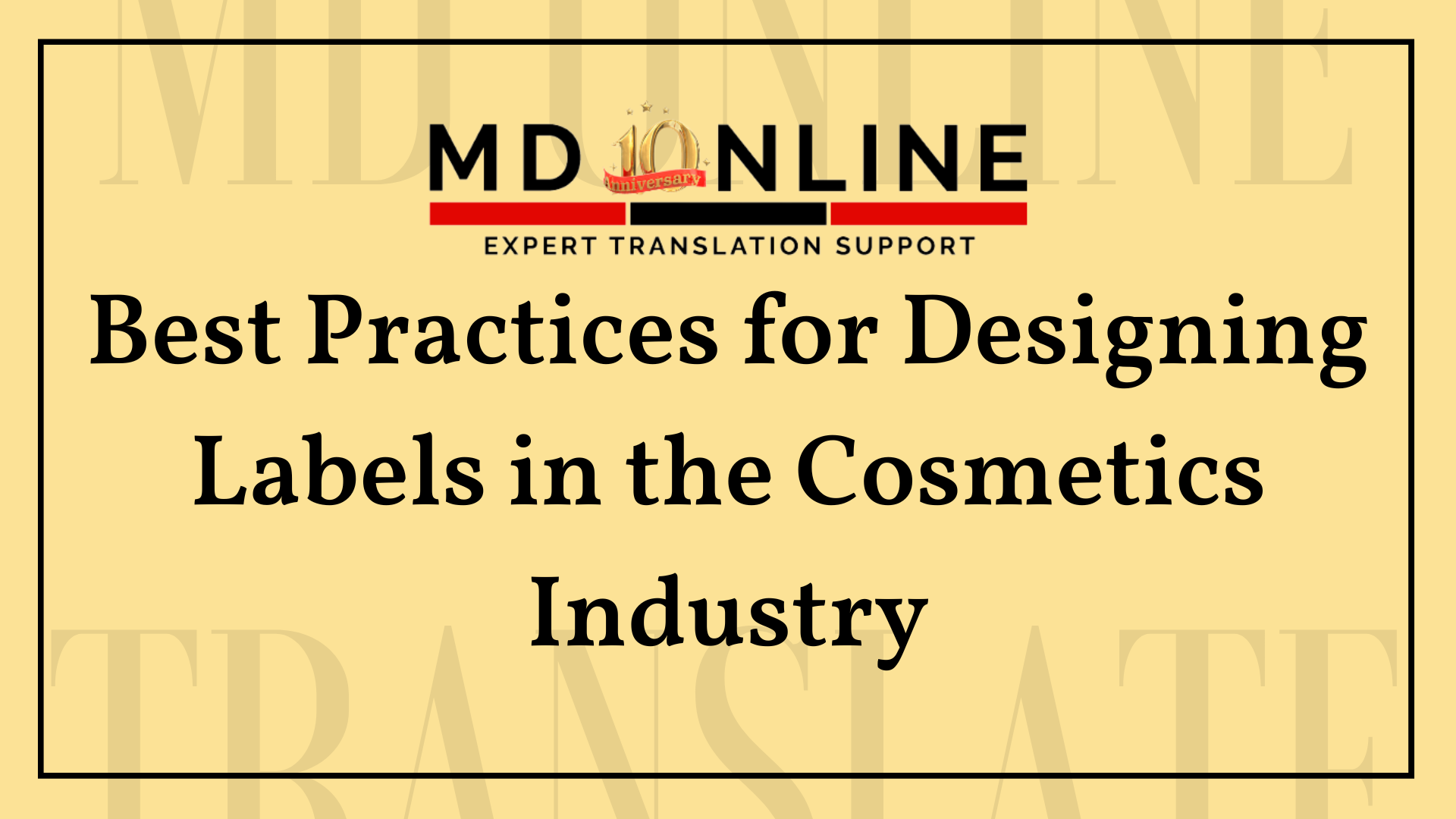Best Practices for Designing Labels in the Cosmetics Industry
Labels are an important aspect of the cosmetics industry. They serve as a visual representation of the brand and provide consumers with key information at the same time. Well-designed labels not only draw attention, but also convey important product information. To create good labels in the cosmetics industry, you need to consider various elements, such as graphics, font, color and their translation into different languages. In this post, we’ll look at best practices for label design in the cosmetics industry.
Graphics: Good cosmetics labels should have visually appealing and informative graphics. Here are helpful tips to create a good label:
- Product Imagery: Include high-quality product images that accurately represent the appearance and usage of the cosmetics.
- Relevant Icons: Use icons or symbols to illustrate key features or benefits of the product, such as cruelty-free, organic, or vegan certifications.
- Minimalistic Design: Keep the label design clean, uncluttered, and visually appealing to attract consumers’ attention without overwhelming them.
Font: Choosing the right font is very important and even crucial for legibility and brand identity on cosmetics labels. Here some tips on how to choose the right font:
- Readability: Choose a font that is clear and easy to read. It should be very easy to read even at smaller sizes. Select sans-serif fonts, which are very often chosen by graphic designers because of their simplicity.
- Brand Consistency: Use consistent typography across different products to maintain a cohesive and recognizable brand identity.
- Emphasis and Hierarchy: Employ font sizes and styles to highlight important information such as product name, key ingredients, and usage instructions.
Color: Color selection is another element that has a significant role on cosmetics labels. Here are some suggestions for choosing a color scheme:
- Brand Identity: Use colors that align with the brand’s identity and appeal to the target market, creating a consistent visual representation.
- Contrast and Legibility: Ensure high contrast between the text and background colors for optimal legibility. Avoid color combinations that strain the eyes or make the text difficult to read.
- Color Psychology: Leverage the emotional impact of colors to evoke desired feelings and associations related to the product’s purpose or target audience.
Translation: Translation is crucial when it comes to designing cosmetics labels for international markets. Such translation must be characterized by accuracy and consistency. Here’s what’s important when translating labels:
- Professional Translation: Engage professional translators who are proficient in both the source and target languages, ensuring accurate and culturally appropriate translations.
- Space Considerations: Account for potential text expansion or contraction in different languages, allowing enough space to accommodate translated text without compromising the label’s design.
- Regulatory Compliance: Ensure that translated labels comply with local regulations, including ingredient listings, claims, and safety warnings.
Here are also some examples of good and bad labels:
Good Label Example:
- Graphics: Clear and visually appealing product imagery that accurately represents the cosmetics.
- Font: Readable font with consistent typography and emphasis on essential information.
- Color: Harmonious color scheme that aligns with the brand’s identity and ensures legibility.
- Translation: Accurate translations provided for different languages, considering cultural nuances and regulatory requirements.
Bad Label Example:
- Graphics: Poor-quality or irrelevant product imagery that fails to represent the cosmetics accurately.
- Font: Inconsistent typography or decorative fonts that compromise readability.
- Color: Disjointed or distracting color combinations that make the label visually unappealing or difficult to read.
- Translation: Inaccurate or poorly translated text that results in confusion or misinterpretation.
Designing effective labels for the cosmetics industry requires careful attention to graphics, font, color, and translation. By incorporating visually appealing graphics, legible fonts, appropriate colors, and accurate translations, cosmetics labels can attract consumers, convey crucial information, and reflect the brand’s identity. It’s important to stay up-to-date with industry trends, regulations, and consumer preferences to create labels that are visually pleasing, informative, and compliant with international standards.

Leave a Reply